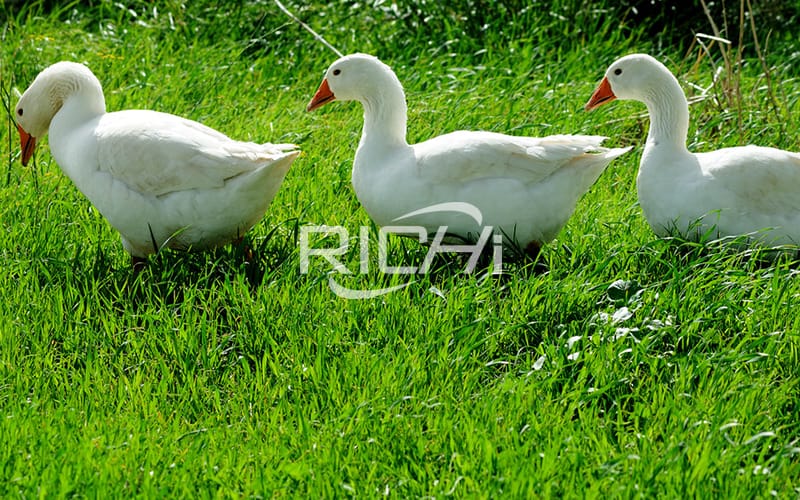Low-cost homemade goose feed formula
I believe that many goose raisers have done it with self-preparation. In fact, there are many goose raisers. In fact, goose raisers also have more self-preparation in the mid-term. So, what should we do?
Self-prepared feed can make full use of local feed resources and facilitate scientific matching. It can not only fully meet the nutritional needs of geese, but also reduce feeding costs, thereby improving production performance and economic benefits.

1. It is necessary to know what nutrients the geese need. Because the nutritional requirements of different breeds of geese are different, such as laying geese and meat geese, the nutrients required by the geese at different time periods are not completely consistent in quantity and quality.
2. The palatability of self-prepared feed is better. The feed must not have a special taste. For feeds with poor palatability or taste, flavoring agents can be used to increase the appetite of the goose.
3. Self-prepared feed should be based on feeding standards. The content of different nutrients recommended by the general feeding standards is to meet the minimum nutritional requirements for normal physiology, growth and development or production of geese. On this basis, make adjustments according to the specific conditions of the goose farm, such as changes in environmental temperature, feeding methods, and health status of the goose flock. For example: when the ambient temperature is high, the content of energy feed should be appropriately reduced. Stocking geese requires more energy than captive geese.
4. Different breeds of geese should adopt different feed formulas at different growth stages. When transferring, transporting, and geese getting sick, they should be fed with comprehensive nutrition, rich in vitamins, crude fiber, and antibiotics.
5. When self-prepared feed, it is better to have more than 3 kinds of energy and protein feed, so that various raw materials can complement each other in nutrition and play a complementary role among nutrients.
6. It is better to process the self-prepared feed into crumbs. If it is too crushed, the feed intake of the goose will be reduced. Debris-like feed geese should not be picky eaters, geese eat slowly, and there is less feed waste.
7. The self-prepared feed must be mixed evenly, otherwise it will cause the lack of one or several nutrients in some geese, and the excess of one or several nutrients in the other geese, or even poisoning.
8. The self-prepared feed should be kept relatively stable, and the feed formula should not be changed easily to prevent anorexia or indigestion. If it must be changed, it should be changed gradually within a week.
9. When self-preparing feed, do not use moldy or deteriorating feed ingredients. Otherwise, the appetite of the goose will decrease, and even cause aflatoxin poisoning.
Note: Different breeding methods, different feeding methods, different feeds used, different local differences, different feed prices, and different energy and nutrition requirements for breeding geese and laying geese.
(1) Recommended feed formula for young goose:
Corn 55%, wheat bran 12%, soybean meal 22%, miscellaneous meal 5%, vegetable oil 1%, premix 5%;
(2) Recommended formula for growing goose feed:
Corn 58%, wheat bran 15%, soybean meal 15%, miscellaneous meal 5%, vegetable oil 2%, premix 5%;
(3) Recommended formula for fattening goose feed:
Corn 63%, wheat bran 10%, soybean meal 14%, miscellaneous meal 5.5%, vegetable oil 2.5%, premix 5%.
If you want to built one complete pellet production line in your country, pls send the inquiry to us. We will customized design according to your requirement.



